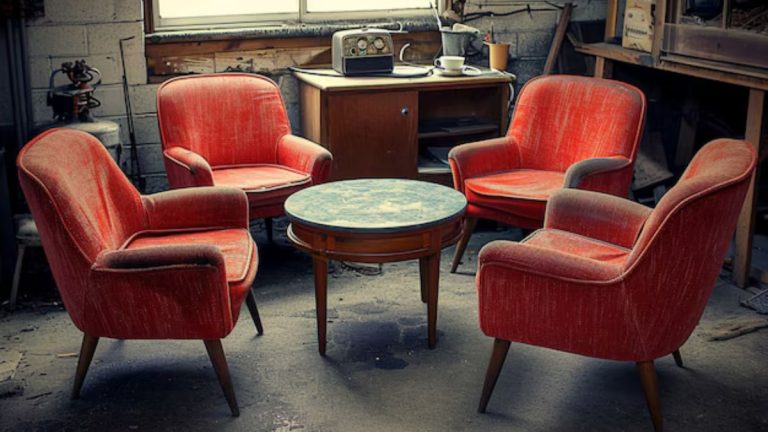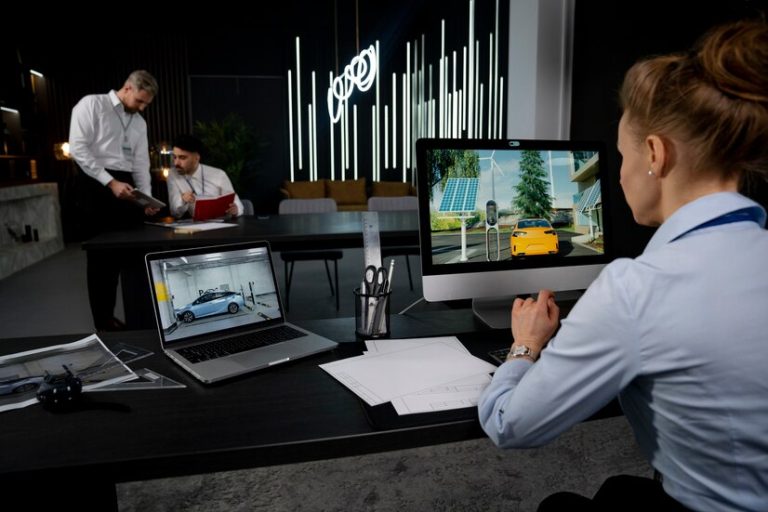In recent years, motosas have emerged as an innovative and convenient transportation solution for cities worldwide. Combining the benefits of electric vehicles and compact design, motosas are transforming how people move around urban environments. Whether you’re a daily commuter, a delivery rider, or simply a technology enthusiast, understanding what motosas are and their potential impact can help you make informed decisions about your mobility options. This comprehensive guide explores everything you need to know about motosas, from their features and advantages to industry trends and future outlooks.
What Are Motosas? An In-Depth Overview
Definition and Characteristics of Motosas
Motosas are small, motorized personal transportation devices designed primarily for urban use. Often resembling mini-motorcycles or enhanced scooters, they offer a lightweight, agile, and eco-friendly alternative to traditional vehicles. Typically equipped with electric or gas-powered engines, motosas are ideal for short-distance travel in crowded city streets.
The key characteristics of motosas include a compact frame, comfortable seating, and easy maneuverability. Their design focuses on convenience, safety, and sustainability—making them a popular choice among commuters seeking an efficient way to navigate congestion.
How Motosas Differ from Similar Vehicles
| Feature | Motosas | Scooters | Bicycles | Motorcycles |
|---|---|---|---|---|
| Power Source | Electric or Gas | Electric or Gas | Human-powered | Gasoline or Electric |
| Size | Compact & Lightweight | Moderate | Lightweight | Heavier & Larger |
| Speed | Up to 30-50 km/h | Up to 40 km/h | Manual pedaling or assist | Varies, often higher |
| Use Case | Urban mobility, delivery | Commuting, deliveries | Recreation, exercise | Recreation, commuting, sport |
Categories of Motosas: Exploring Variants
Electric Motosas
The most popular segment today, electric motosas are powered by rechargeable batteries, which provide silent, emissions-free operation. They are favored for their low operating costs and environmental benefits. Brands like Xiaomi and Segway are leading manufacturers offering various models suited for urban commuters.
Gas-Powered Motosas
While less common today, gas-powered motosas still appeal to users needing longer ranges or more power. They tend to be heavier and noisier but may offer quicker refueling options compared to recharging batteries.
Hybrid Models
Hybrid motosas combine electric and gasoline engines, offering increased flexibility, longer ranges, and enhanced performance. Though still emerging, this category aims to address some limitations of purely electric models.
Applications and Common Uses of Motosas
Urban Commuting
Many city dwellers prefer motosas for daily transportation, thanks to their small footprint and ability to weave through traffic. They facilitate quick trips, reduce commute times, and alleviate parking challenges.
Recreational Activities
For adventure seekers, motosas provide a fun and efficient way to explore urban parks, trails, or scenic routes, especially lightweight electric models designed for leisure.
Delivery and Courier Services
Many delivery companies adopt motosas to transport food, parcels, and goods swiftly across congested areas. Their agility and low operating costs make them ideal for last-mile delivery solutions.
Personal Transportation
Beyond commuting, motosas are gaining popularity among students and casual users seeking quick, affordable transport options without the hassle of owning larger vehicles.
Features and Components of Motosas
Design and Ergonomics
The frame structure of motosas emphasizes durability and lightweight design. Many models feature foldable components for enhanced portability. The ergonomics prioritize rider comfort with adjustable seats and handles, making them suitable for various users.
Power Source and Motor Specifications
Electric motosas employ lithium-ion batteries for high energy density and longer lifespan, whereas gas models rely on traditional internal combustion engines. Motor wattage varies, typically ranging from 250W to 1500W, depending on model specifications. Efficient energy management ensures better performance and durability.
Safety Features
Modern motosas integrate safety elements such as disc or regenerative brakes, LED lights, and reflective surfaces to improve visibility. Compatibility with safety gear like helmets and protective guards is crucial for rider safety.
Technological Enhancements
Features like digital dashboards displaying speed and battery levels, Bluetooth connectivity, and app integration are increasingly common. Anti-theft systems, GPS tracking, and smart locking mechanisms add layers of security and user convenience.
Advantages of Using Motosas
Eco-Friendly and Emission Reduction
Motosas, especially electric models, significantly cut carbon emissions, contributing to cleaner urban air and sustainability goals. They produce no exhaust gases, a vital factor in combating urban pollution.
Cost-Effectiveness
Compared to cars, motosas offer lower purchase prices, minimal maintenance costs, and cheaper fuel or charging expenses, making them economical for everyday use.
Urban Maneuverability
With their compact size, motosas excel at navigating traffic jams and tight parking spaces, saving valuable time and effort.
Lower Maintenance
Electric motosas eliminate many mechanical components prone to wear, such as oil changes and complex repairs, resulting in less maintenance and downtime.
Space Efficiency
Their small footprint allows easy parking and storage, especially valuable in densely populated cities where space is a premium.
Challenges and Limitations Facing Motosas
Battery Range and Lifespan
One of the main challenges is limited range per charge, which varies from model to model but can still restrict long-distance travel. Battery deterioration over time also raises concerns about replacement costs and performance degradation.
Weather Dependency
Electric motosas are vulnerable to adverse weather conditions like rain, snow, or extreme temperatures, which may impact safety and battery life.
Regulatory and Safety Concerns
Legal frameworks for motosas are evolving, with some regions imposing restrictions or requiring licenses. Safety standards are still developing, and accidents involving motosas highlight the need for rider awareness and infrastructure improvements.
Infrastructure Requirements
To support widespread adoption, dedicated charging stations and storage facilities are vital, yet they are unevenly distributed, limiting usability in some areas.
Market and Industry Trends for Motosas
Industry Growth and Projections
The global motosas market is expected to grow at a compound annual growth rate (CAGR) of approximately 12% over the next five years. Urbanization, environmental concerns, and technological innovations drive this expansion.
Major Manufacturers and Brands
Leading brands such as Xiaomi, Segway, and Razor are developing new models with smart features and better batteries, pushing the industry forward. New entrants are constantly emerging, increasing competition and innovation.
Technological Innovations
Advancements include improved battery chemistry, faster charging times, smart connectivity, anti-theft systems, and integration with city infrastructure to facilitate seamless urban mobility.
Legislation and Regulations
Many countries are updating policies to accommodate motosas, promoting their adoption through incentives, dedicated lanes, and safety standards. Staying compliant is essential for users and manufacturers.
Consumer Demographics
Young professionals, students, and eco-conscious consumers are the primary adopters, but increasing safety awareness is broadening appeal across all age groups.
How to Choose the Perfect Motosas for You
Assessing Personal Needs
- Usage frequency and distance: For daily city trips, a model with longer battery life is preferred.
- Portability and storage: If you need to carry or store your motosas at work or home, consider foldable or compact options.
- Budget: Prices vary widely; setting a budget helps narrow choices.
Key Factors to Consider
- Battery life and charging time: Longer battery duration and faster recharge mean more convenience.
- Build quality and durability: Look for reputable brands with quality components.
- Safety features: Brakes, lights, and safety gear compatibility are critical.
- Price and warranty: A good warranty offers peace of mind and protects your investment.
Popular Models and Brands
Some highly-rated motosas include Xiaomi Mi Electric Scooter, Segway Ninebot models, and Razor EcoSmart. Reading user reviews and expert opinions can help you find the best fit for your needs. Websites like Consumer Reports provide valuable insights into the latest models.
Maintaining Your Motosas: Tips for Longevity and Safety
Regular Inspection Practices
Perform routine checks on brakes, tires, lights, and batteries to ensure optimal safety and performance. Clean components and replace worn-out parts promptly.
Battery Care and Replacement
Keep batteries charged within recommended ranges, avoid complete discharges, and store properly during periods of inactivity. Consider professional replacement when performance declines significantly.
Ride Safely and Comply with Regulations
Always wear helmets and protective gear, adhere to local traffic laws, and avoid risky maneuvers. Stay updated on city regulations concerning motosas.
Proper Storage
Store your motosas indoors or in sheltered areas to protect against weather damage, especially if using electric models in rainy climates.
Future Perspectives: The Road Ahead for Motosas
Upcoming Innovations
Expect to see longer-lasting batteries, faster charging, smarter connectivity, and integration with urban infrastructure. Companies are investing heavily in R&D to enhance safety and efficiency.
Impact on Urban Mobility and Smart Cities
Motosas are poised to be integral to smart city initiatives, offering sustainable last-mile solutions. Fully integrated transport networks with real-time data will improve traffic flow and reduce congestion.
Sustainability Goals
With rising environmental awareness, motosas will play a vital role in reducing urban carbon footprints, especially as electric models become more affordable and widely available.
Key Takeaways: Summarizing Motosas and Their Role
The motosas industry is rapidly evolving, driven by technological advances and changing urban needs. They offer a practical, eco-friendly, and economical transportation alternative with enormous growth potential.
Choosing the right motosas depends on assessing your individual needs, safety considerations, and budget. Proper maintenance and awareness of legislation are essential to maximize benefits and ensure safety.
As cities continue to embrace sustainable solutions, motosas are set to become a crucial part of the future mobility landscape, reducing congestion and emissions while providing efficient urban transport.
Frequently Asked Questions (FAQs)
- Are motosas legal in all cities? Legislation varies; check local regulations regarding electric scooters and personal transport devices.
- How long does a motosas battery last? Typical electric motosas offer 20-50 km per charge, depending on the model and usage conditions.
- What safety gear should I use with a motosas? Always wear a helmet, gloves, knee and elbow guards, and reflective clothing for visibility.
- How much does a good motosas typically cost? Prices can range from $300 to over $2000 based on features, brand, and specifications.
- Can I ride a motosas in the rain? Electric models should be used cautiously; some are waterproof but it’s best to avoid riding in heavy rain.
- What maintenance does a motosas require? Regular checks on brakes, tires, battery health, and electrical systems are recommended.
Final Thoughts
Motosas stand at the forefront of urban transportation innovation. Their eco-friendly, cost-effective, and user-friendly attributes make them an excellent choice for the modern city dweller. As technology continues to improve and infrastructure adapts, motosas are set to redefine how we approach daily mobility, making cities cleaner, smarter, and more accessible for everyone.





